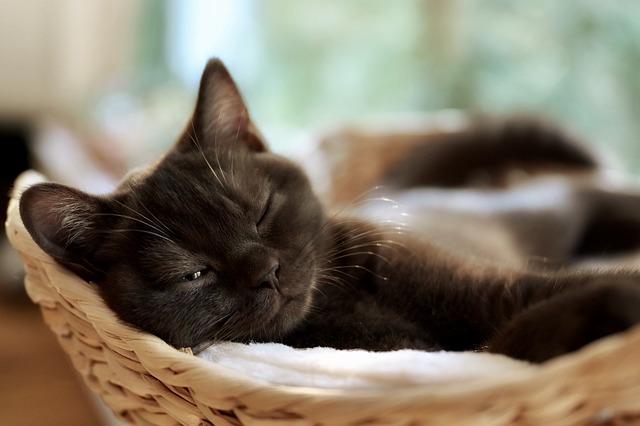Cats are scared of balloons due to their sudden movements and loud popping sounds. Balloons can startle and frighten cats, causing them to associate balloons with danger and fear.
This fear may be heightened by the cat’s natural instinct to be cautious around unfamiliar objects or sudden movements. As curious and territorial creatures, cats rely on their senses to assess and navigate their environment.
Balloons, with their unpredictable movements and noise, can trigger the cat’s fear response, causing them to run away or exhibit signs of stress such as hiding, hissing, or cowering.
Understanding and respecting a cat’s fear of balloons can help create a safe and calm environment for them.
The Fear Of Balloons In Cats
Balloons are a common object that many people associate with joy and celebration. However, for our feline friends, they can be a source of anxiety and fear.
The fear response in cats when it comes to balloons is quite common, and it can be perplexing for cat owners who may not understand why their beloved pets react this way.
Strongunderstanding The Fear Response In Cats/strong
Cats are naturally cautious creatures, and their fear response is a vital survival mechanism. This response is triggered when they encounter something they perceive as a threat.
The fear response elicits a cascade of physiological changes in their bodies, including increased heart rate, rapid breathing, and a heightened sense of alertness.
When it comes to balloons, cats may exhibit various fear-related behaviors. They might hiss, growl, or run away when balloons are present.
Some cats may freeze in fear or display signs of stress, such as excessive grooming or hiding. Understanding this fear response is the first step in helping our feline friends overcome their fear of balloons.
Strongfactors Contributing To A Cat’s Fear Of Balloons/strong
Several factors can contribute to a cat’s fear of balloons. Let’s explore some of the common reasons behind this fear:
- Predator instinct: Cats are natural hunters, and balloons, with their unpredictable movements, may trigger their predatory instinct. The sudden movement of a balloon can resemble the movement of prey, making cats instinctively wary and afraid.
- Loud noise: Balloons are prone to popping, and the loud noise it produces can startle a cat. Cats have sensitive hearing, and the sudden loud noise can be overwhelming and frightening to them.
- Unfamiliar object: Cats are creatures of habit and are often wary of unfamiliar objects or changes in their environment. Balloons, with their bright colors, odd shapes, and floating quality, can be perceived as unfamiliar and potentially dangerous by cats.
- Previous negative experience: If a cat has had a negative experience with balloons in the past, such as the balloon popping near them or someone scaring them with a balloon, it can create a lasting fear response.
Strongstrategies To Help Cats Overcome Their Fear Of Balloons/strong
If your cat is fearful of balloons, there are several strategies you can employ to help them overcome their fear:
- Gradual exposure: Introduce balloons to your cat in a controlled and gradual manner. Start with deflated balloons in a calm environment and allow your cat to approach them at their own pace. Reward your cat with treats or praise for calm behavior.
- Positive association: Create positive associations with balloons by incorporating treats or playtime during balloon exposure. This helps your cat develop a positive association with balloons, reducing fear over time.
- Desensitization: Gradually expose your cat to balloons in different situations and environments. By gradually increasing the intensity of the exposure, you can help your cat build confidence and reduce their fear response.
- Seek professional help: If your cat’s fear of balloons persists and significantly impacts their quality of life, consider consulting a professional animal behaviorist or trainer. They can provide tailored guidance and assistance in helping your cat overcome their fear.
Remember, patience and understanding are key when helping your cat overcome their fear of balloons. By implementing these strategies, you can gradually help your feline friend feel more comfortable and confident in the presence of balloons.
FAQs
Do Cats Are Afraid Of Balloons?
Yes, cats can be afraid of balloons due to their sudden movements and noise.
What Scares The Cat The Most?
Loud noises, sudden movements, and unfamiliar surroundings scare cats the most.
Is It Safe For Cats To Play With Balloons?
Playing with balloons can be unsafe for cats as they can pop easily and scare or harm them. Balloon pieces can also be swallowed, causing digestive issues. It’s best to keep cats away from balloons to ensure their safety and well-being.
What Are Cats Biggest Fear?
Cats’ biggest fear often includes loud noises, unfamiliar animals or people, sudden movements, and being restrained or trapped.
Conclusion
Understanding why cats are scared of balloons can help us provide a safe and stress-free environment for our feline friends. From their unpredictable movement to the loud noise they make when popped, balloons can trigger a sense of fear and anxiety in cats.
By recognizing and respecting their fear and providing reassurance, we can help our cats feel more relaxed around these colorful inflatables.
His professional interests include humane education, ethics, small animal behavior, and veterinary. As a pet lover from school life, having grown up with two cats and a dog. If he isn’t spending time with his friends and family, Justin enjoys traveling. Learn more about Justin here.

